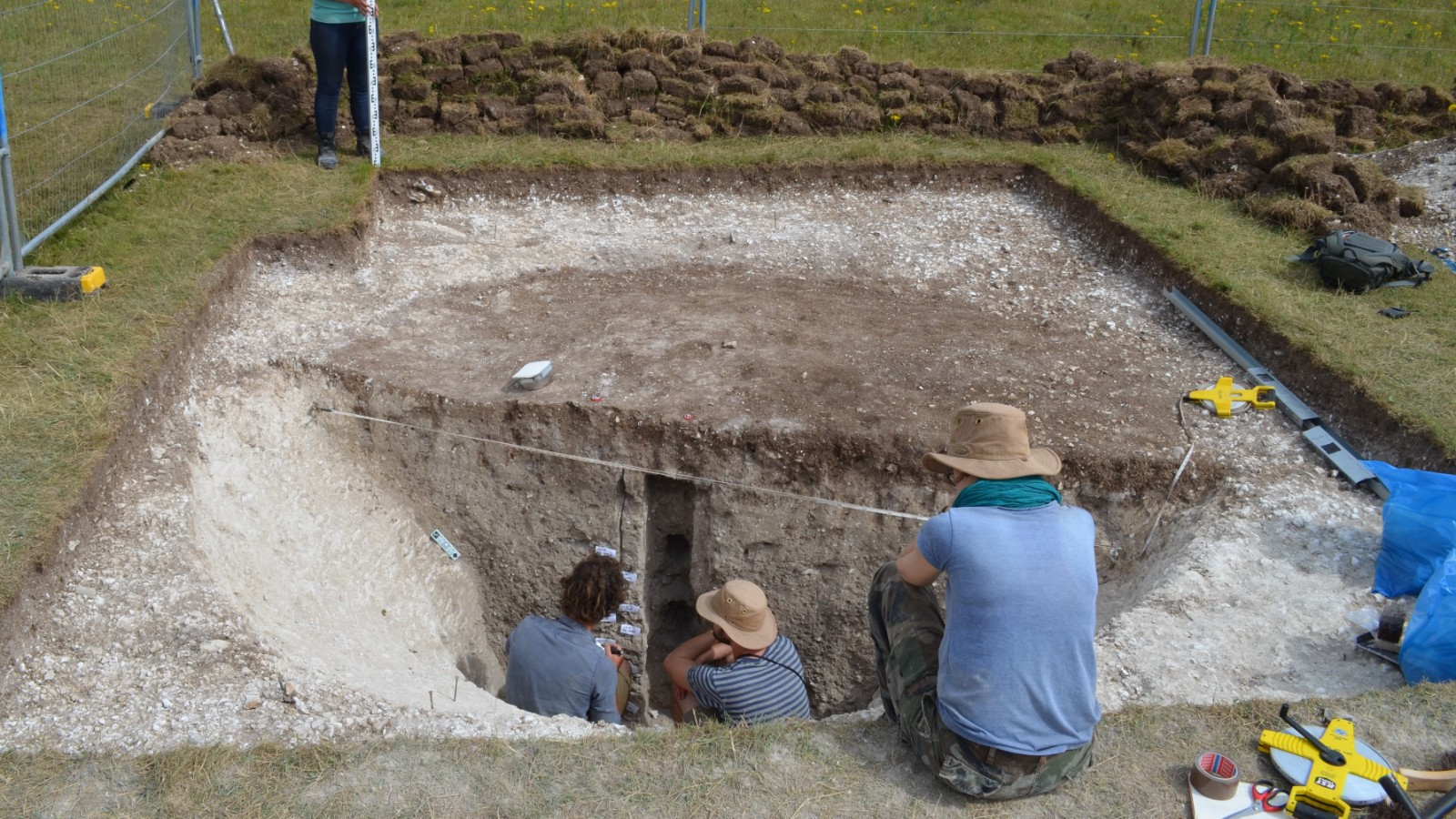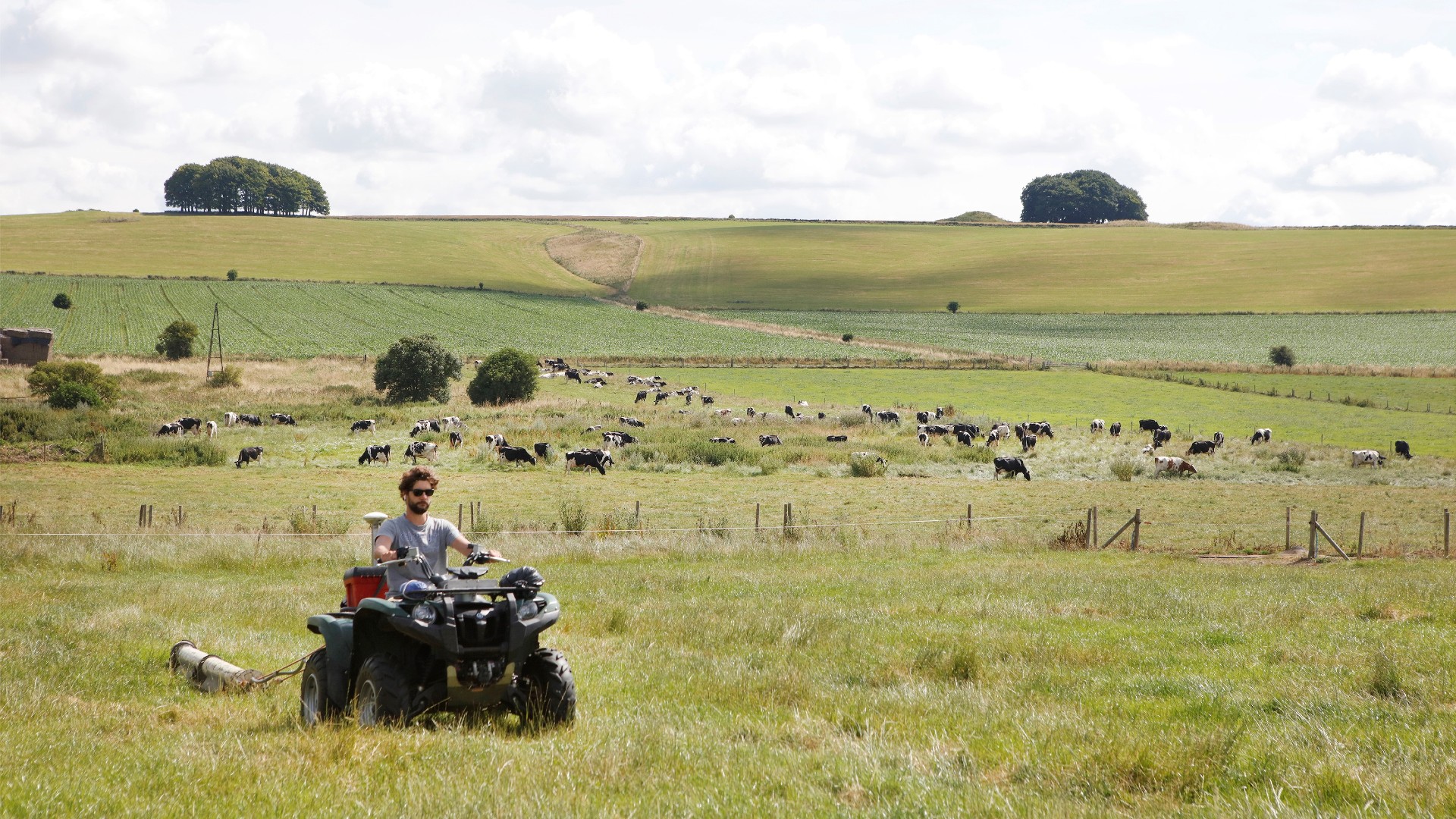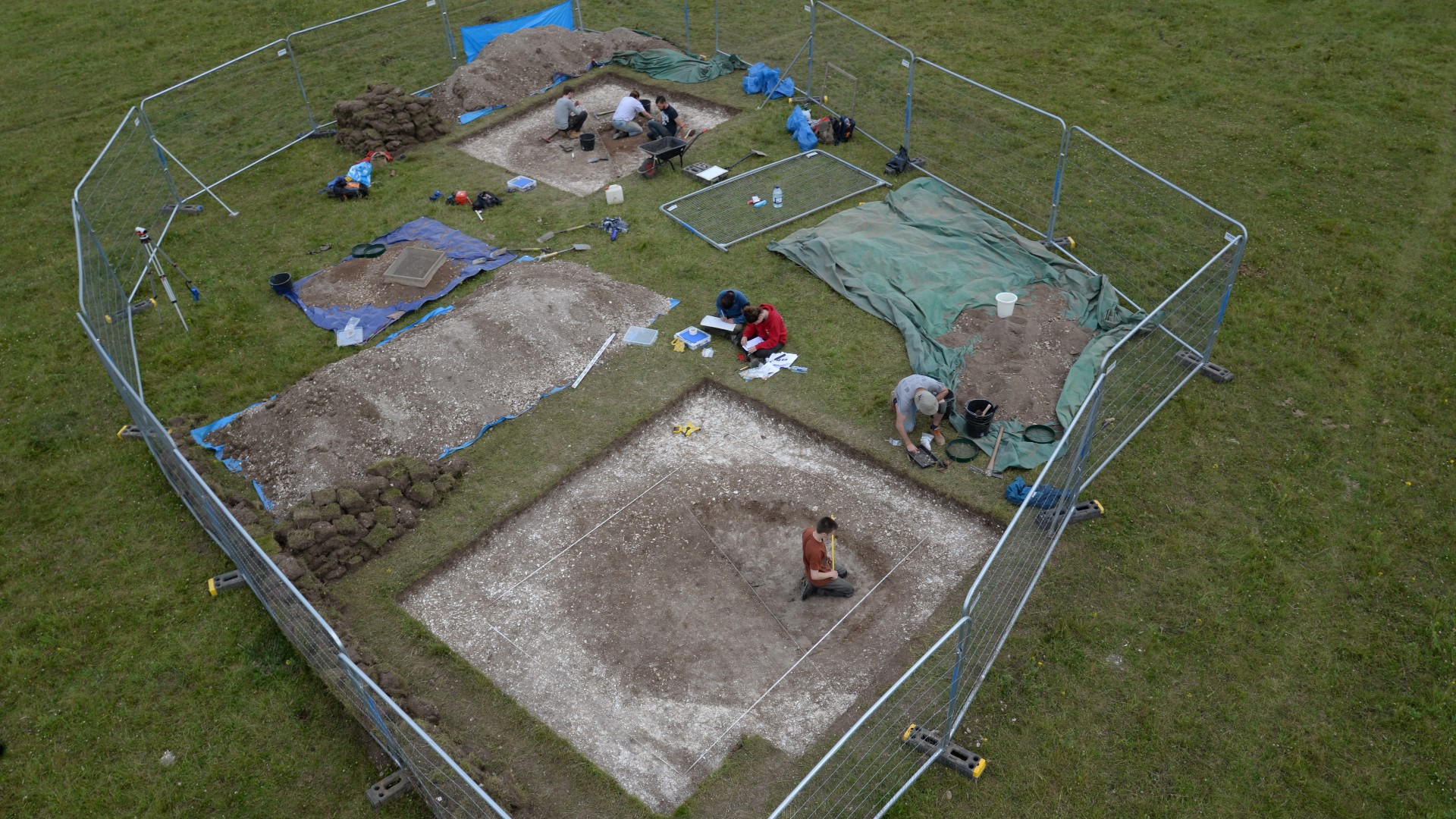Thousands of prehistoric pits discovered around Stonehenge
Hunters likely built some pits, while others were ceremonial.

Stonehenge is surrounded by grassy vistas nowadays, but about 10,000 years ago, the landscape had pits likely dug by prehistoric hunters trying to trap game, a new study finds.
A team of researchers found evidence of these pits while surveying the area around Stonehenge, according to the study, published online on May 9 in the Journal of Archaeological Science.
The team conducted an electromagnetic induction field survey of about 1 square mile (2.5 square kilometers) around Stonehenge and used an algorithm to detect anomalies. During this type of survey, researchers carry a rod-like piece of equipment that has electromagnetic coils on either end. One coil generates an electromagnetic field, which allows the device to analyze the electrical conductivity of the soil; changes in electrical conductivity may mean that archaeological remains are present.
Related: Ancient Stonehenge pigs had long journey before their slaughter

The algorithm identified 415 potential large pits that were bigger than 7.9 feet (2.4 meters) in diameter, and about 3,000 smaller pits that were less than 7.9 feet across, study lead author Philippe De Smedt, an associate professor of the environment at Ghent University in Belgium, told Live Science in an email.
When all these pits date to is uncertain. The team excavated nine of the large pits and found that six of them were made by humans in prehistoric times. They could tell they were made by humans based on the artifacts found within them and the shape of the pits. The oldest excavated pit was around 10,000 years old and contained the remains of stone tools that may have been used for hunting. The finds "suggest it [the pit] was probably dug as a hunting trap for large game such as aurochs [a now-extinct cattle species], red deer and wild boar," De Smedt said.
While the oldest known pit was likely used for hunting, one of the other pits dated to 3,300 years ago, a time after Stonehenge was Stonehenge was erected and may "very well relate to the long-term ceremonial structuring of the Stonehenge landscape," De Smedt said. Additionally, two of the other pits, possibly built for ceremonial purposes, dated to around 5,500 years ago and 5,200 years ago, a time not long before Stonehenge was constructed, De Smedt said.
Sign up for the Live Science daily newsletter now
Get the world’s most fascinating discoveries delivered straight to your inbox.
It's unclear why prehistoric people built Stonehenge, but several ideas include that the monument served as a sacred hunting ground, a place of community gathering, an astronomical calendar, a structure for sound amplification, a cemetery or even a haven for ancient healing, Live Science previously reported.

The pits are "interesting discoveries," Timothy Darvill, a professor of archaeology at Bournemouth University in the U.K., who has done prior excavations at the site but was not involved with the new study, told Live Science in an email. "Geophysical survey still has a lot to reveal in the Stonehenge landscape, [but] we must do what this team has done and field-check all interesting anomalies before making interpretations of them."
Darvill added that "radiocarbon dating features discovered through geophysics will add detail to the picture and allow finds to be properly placed in the long and complicated sequence of activity in the Stonehenge landscape."
In recent years studies of the landscape around Stonehenge have revealed a number of discoveries. These include a super-henge stone monument about 15 times bigger than Stonehenge, an earthen enclosure whose purpose is unclear and several graves.
Originally published on Live Science.

Owen Jarus is a regular contributor to Live Science who writes about archaeology and humans' past. He has also written for The Independent (UK), The Canadian Press (CP) and The Associated Press (AP), among others. Owen has a bachelor of arts degree from the University of Toronto and a journalism degree from Ryerson University.










